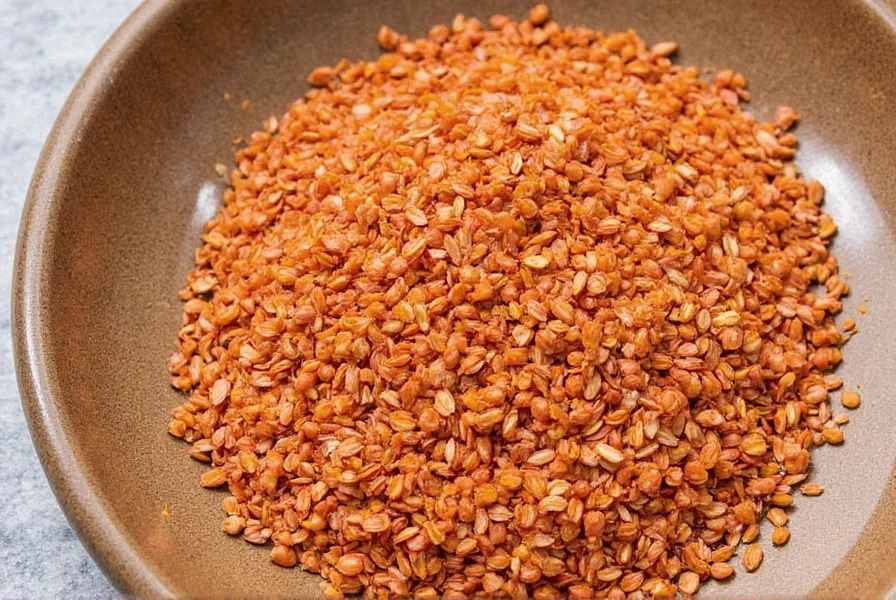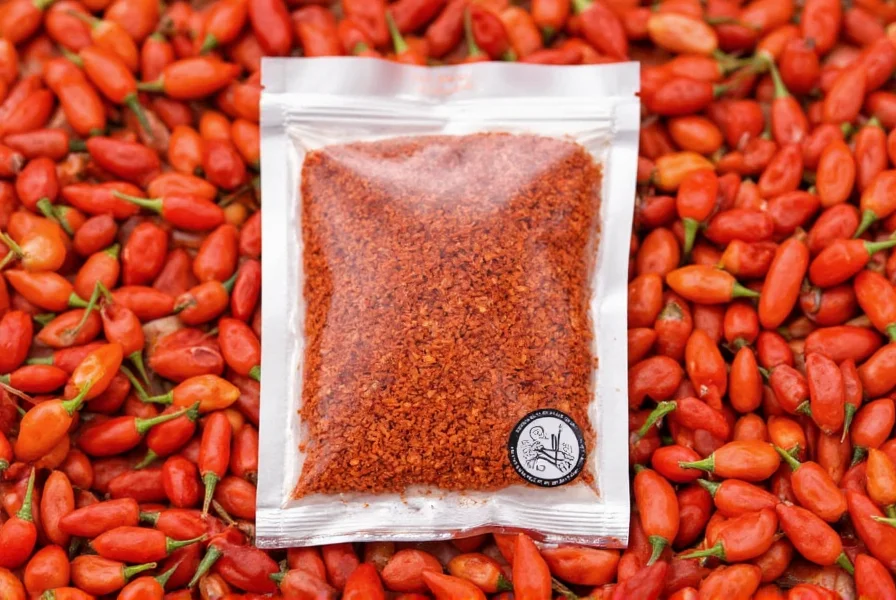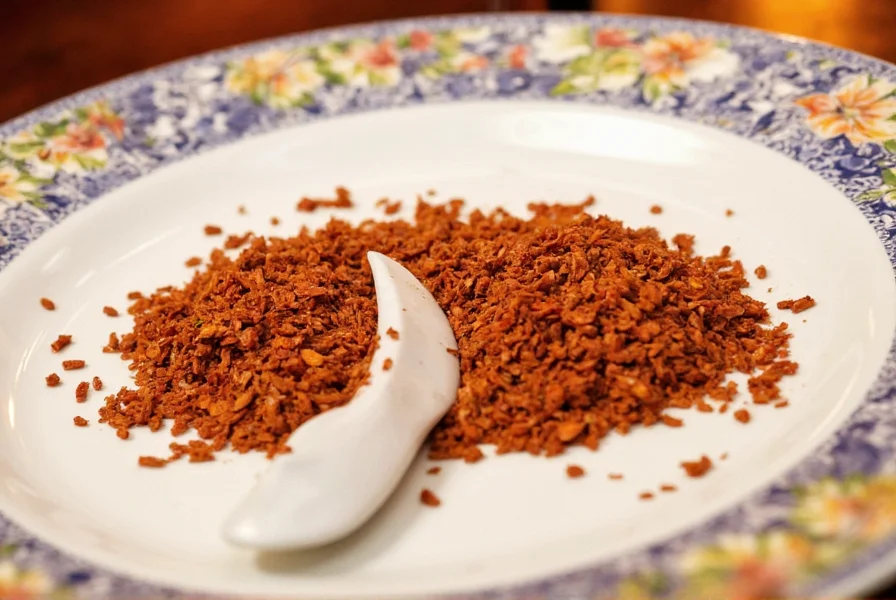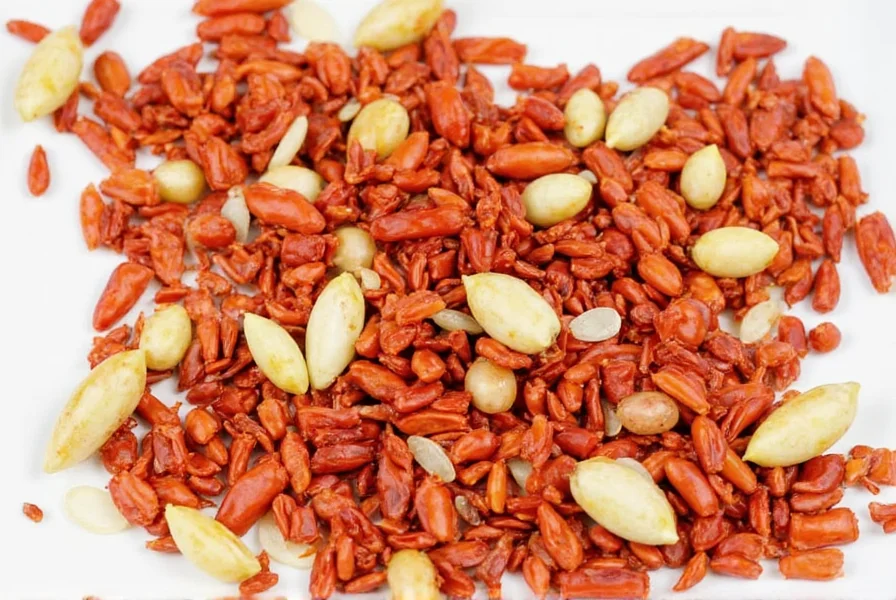Table of Contents
- Introduction to Thai Chili Flakes
- Why Thai Chili Flakes Are a Must-Have in Every Kitchen
- Practical Tips for Using Thai Chili Flakes
- Buying Guide: How to Choose the Best Thai Chili Flakes
- Understanding the Flavor Profile of Thai Chili Flakes
- A Comparison Between Different Types of Chili Flakes
- Frequently Asked Questions About Thai Chili Flakes
- Conclusion
Introduction to Thai Chili Flakes
Thai chili flakes are a culinary powerhouse that instantly elevates dishes with their bold heat and complex flavor profile. Made from dried bird's eye chilies (prik kee noo), these small but potent flakes deliver a unique combination of intense heat, smoky aroma, and subtle sweetness that sets them apart from other chili products. Whether you're cooking Thai cuisine or experimenting with global flavors, these flakes offer versatility that belongs in every kitchen.

Unlike generic red pepper flakes, authentic Thai chili flakes provide a distinctive citrusy note and balanced heat that enhances rather than overwhelms dishes. This guide covers everything you need to know about using, selecting, and storing these essential spices to maximize their flavor potential.
Why Thai Chili Flakes Are a Must-Have in Every Kitchen
Thai chili flakes stand out as a kitchen essential for several compelling reasons:
- Complex Heat Profile: With 50,000-100,000 Scoville units, they offer balanced heat that's hotter than jalapeños but milder than ghost peppers, with distinctive smoky and slightly sweet undertones.
- Instant Flavor Boost: A pinch adds immediate heat and depth without requiring additional preparation time.
- Versatile Applications: Perfect for Thai curries, stir-fries, soups, marinades, sauces, and even unexpected dishes like chocolate desserts or Bloody Mary cocktails.
- Long Shelf Life: Properly stored in an airtight container away from light, they maintain peak flavor for 6-12 months.

Unlike many spices that lose potency quickly, Thai chili flakes retain their vibrant color and flavor when stored correctly, making them a reliable kitchen staple for both everyday cooking and special occasions.
Practical Tips for Using Thai Chili Flakes
Maximize the flavor potential of Thai chili flakes with these expert techniques:
- Start Small: Begin with 1/8 teaspoon per serving and adjust gradually - their heat builds quickly.
- Toast for Depth: Dry-toast in a pan for 30-60 seconds before adding to dishes for enhanced smokiness.
- Add at the End: Preserve their vibrant color and fresh flavor by adding during the last minute of cooking.
- Balance the Heat: Counteract excessive spice with dairy (coconut milk), acid (lime juice), or sweetness (palm sugar).
- Combine Strategically: Pair with garlic, ginger, fish sauce, or soy sauce for authentic Thai flavor profiles.

Remember: Thai chili flakes work best when they complement other ingredients rather than dominate the dish. Their true magic lies in how they enhance existing flavors while adding that signature Thai heat.
Buying Guide: How to Choose the Best Thai Chili Flakes
Not all "Thai chili flakes" are created equal. Follow these guidelines to select authentic, high-quality products:
Key Quality Indicators
- Origin: Look for "Thai Bird's Eye Chili" or "Prik Kee Noo" on the label - authentic products specify the chili variety.
- Color: Rich red-orange hue indicates freshness; dull or brownish tones suggest age or poor storage.
- Aroma: Should have a sharp, pungent scent; avoid any with musty or stale smells.
- Texture: Coarse flakes with some variation in size indicate proper processing (not overly fine powder).
- Ingredients: Should contain only dried chilies - no additives, fillers, or anti-caking agents.
| Brand | Key Features | Best For |
|---|---|---|
| Kari-Wala | Consistent heat level, vibrant color, no additives | Professional chefs and serious home cooks |
| Baan Thai | Hand-selected chilies, balanced heat profile | Authentic Thai recipes and sauces |
| Sri Pahang | Traditional processing, smooth texture | Curries, soups, and marinades |

Avoid products labeled simply as "red pepper flakes" or "chili flakes" without specifying Thai bird's eye chilies - these often lack the distinctive flavor profile that makes Thai chili flakes special.
Understanding the Flavor Profile of Thai Chili Flakes
Thai chili flakes deliver a multi-dimensional flavor experience:
- Heat Level: 50,000-100,000 Scoville units - intense but not overwhelming when used properly
- Primary Taste: Sharp, clean heat with a distinctive citrusy note
- Secondary Notes: Subtle sweetness, smokiness, and floral undertones
- Texture: Slightly coarse flakes that provide pleasant mouthfeel without grittiness
This complex profile makes them ideal for balancing rich, creamy ingredients like coconut milk and for adding dimension to both savory and sweet dishes. Unlike cayenne or generic red pepper flakes that deliver straightforward heat, Thai chili flakes offer a more nuanced experience that enhances rather than masks other flavors.
A Comparison Between Different Types of Chili Flakes
| Type | Scoville Units | Flavor Profile | Best Applications |
|---|---|---|---|
| Thai Chili Flakes | 50,000-100,000 | Spicy, smoky, citrusy, slightly sweet | Thai cuisine, stir-fries, soups, sauces |
| Cayenne Pepper | 30,000-50,000 | Sharp, earthy, straightforward heat | Hot sauces, rubs, marinades |
| California Chile | 1,000-2,500 | Mild, nutty, slightly sweet | Pizza, salads, dips |
| Ancho Chili | 1,000-2,000 | Smoky, sweet, fruity | Mexican dishes, stews, sauces |
While cayenne offers similar heat intensity, it lacks the distinctive citrus notes and complexity of Thai chili flakes. For authentic Thai dishes, these flakes are irreplaceable due to their specific flavor profile that complements traditional ingredients like fish sauce and lime.
Frequently Asked Questions About Thai Chili Flakes
What are Thai chili flakes made from?
Thai chili flakes are made exclusively from dried bird's eye chilies (prik kee noo), a small but potent chili variety native to Thailand. The chilies are harvested at peak ripeness, sun-dried until brittle, and then carefully crushed to maintain their distinctive texture and flavor profile.
How hot are Thai chili flakes compared to other chilies?
Thai chili flakes range from 50,000 to 100,000 Scoville Heat Units, making them 15-20 times hotter than jalapeños (2,500-8,000 SHU) but significantly milder than ghost peppers (855,000-1,041,427 SHU). This moderate-to-high heat level provides intense flavor without being overwhelming when used properly.
Can I substitute Thai chili flakes with other chili products?
While substitutions are possible, they won't deliver the same flavor profile. Cayenne pepper offers similar heat but lacks the citrus notes. Crushed red pepper flakes are too mild and uniform. For closest approximation, combine 1 part cayenne with 1 part paprika and a squeeze of lime juice to mimic the complex flavor of Thai chili flakes.
How should I store Thai chili flakes to maintain freshness?
Store in an airtight container away from light, heat, and moisture. A cool, dark cupboard is ideal for 6-12 months of peak freshness. For longer storage (up to 2 years), keep in the freezer in a sealed container. Never store near the stove or oven where temperature fluctuations degrade quality.
Are Thai chili flakes the same as red pepper flakes?
No. Traditional red pepper flakes are typically made from cayenne or other red chilies and have a milder, more uniform heat without the distinctive citrusy notes. Thai chili flakes specifically come from bird's eye chilies and offer a more complex flavor profile with higher heat intensity.
What dishes work best with Thai chili flakes?
Thai chili flakes excel in Southeast Asian dishes like Pad Thai, Tom Yum soup, green curries, and stir-fries. They also enhance non-Asian recipes such as Bloody Mary cocktails, avocado toast, roasted vegetables, chocolate desserts, and even salad dressings. They pair particularly well with coconut milk, lime, fish sauce, and fresh herbs.
How can I reduce the heat if I've added too many Thai chili flakes?
Counteract excessive heat by adding dairy (coconut milk, yogurt, or cream), acid (lime juice or vinegar), or sweetness (honey or palm sugar). Starchy ingredients like rice or potatoes can also help absorb some capsaicin. Remember: cooling the dish doesn't reduce capsaicin content but helps balance the sensation of heat.
Conclusion
Thai chili flakes are far more than just a spicy addition to your kitchen - they're a flavor enhancer that brings complexity, depth, and authenticity to countless dishes. Their unique combination of intense heat, citrusy notes, and smoky undertones makes them irreplaceable for authentic Thai cuisine while adding exciting dimension to global recipes.
By understanding their proper use, storage, and substitution options, you can confidently incorporate these versatile flakes into your cooking routine. Whether you're a seasoned chef or a home cook looking to expand your flavor horizons, Thai chili flakes offer endless possibilities for creating memorable dishes with balanced heat and rich flavor.
Next time you're in the kitchen, reach for that bottle of authentic Thai chili flakes and discover how a little can go a long way in transforming ordinary meals into extraordinary culinary experiences.











 浙公网安备
33010002000092号
浙公网安备
33010002000092号 浙B2-20120091-4
浙B2-20120091-4